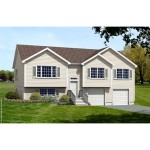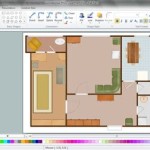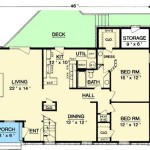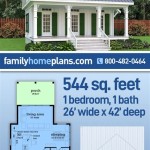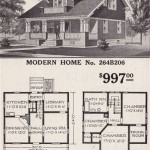Designing Your Dream Home: A Guide to Creating a Custom House Plan
The desire to live in a home perfectly tailored to individual needs and preferences is a common aspiration. While pre-existing houses offer convenience and often lower initial costs, they rarely encompass all the desired features and spatial arrangements. Designing a custom house plan allows homeowners to craft a living space that truly reflects their lifestyle, accommodating specific requirements and aesthetic sensibilities.
Approaching a custom house plan design requires careful consideration and a systematic approach. It involves assessing needs, exploring design options, and collaborating with professionals to translate the vision into a buildable and functional reality. This article explores the critical aspects of designing your own house plan, providing a comprehensive overview of the process.
Understanding Your Needs and Lifestyle
The initial phase of designing a custom house plan revolves around a thorough assessment of individual needs and lifestyle. This involves more than simply determining the number of bedrooms and bathrooms desired. It requires a deep dive into how occupants will utilize the space, considering various factors that impact functionality and comfort.
Family size and composition are fundamental considerations. A growing family requires more bedrooms and living spaces compared to a single individual or a couple. The ages of family members also influence design choices. For instance, a household with young children may prioritize open floor plans that allow for easy supervision, while a family with teenagers might appreciate more private spaces.
Lifestyle habits play a significant role in shaping the house plan. Individuals who frequently entertain guests may desire a large, well-equipped kitchen and a spacious dining area. Those who work from home need a dedicated office space that offers privacy and minimizes distractions. Hobbies and interests also influence spatial requirements. Artists may need a studio, musicians may desire a soundproofed practice room, and gardening enthusiasts may value a sunroom or a dedicated gardening space.
Accessibility needs are crucial considerations for individuals with disabilities or mobility limitations. Designing a home with accessible features, such as wider doorways, ramps, and grab bars, ensures universal design principles are implemented, providing comfortable and safe living environment for all occupants. Planning for future needs is also essential. As individuals age, their mobility may decrease, making it prudent to incorporate features that will accommodate future accessibility requirements.
Climate conditions also impact design choices. Homes in colder climates require robust insulation and efficient heating systems to minimize energy consumption and maintain comfortable indoor temperatures. In warmer climates, passive cooling strategies, such as natural ventilation and shading, are essential for reducing reliance on air conditioning. Solar orientation is another key consideration. Positioning the house to maximize solar gain in winter and minimize it in summer can significantly reduce energy costs.
Finally, budget constraints are a critical factor that must be considered from the outset. The size and complexity of the house directly impact construction costs. Setting a realistic budget early on and prioritizing essential features helps prevent overspending and ensures the project remains financially viable. Compromises may be necessary to stay within budget, but careful planning and prioritization can ensure that the most important needs are met.
Exploring Design Options and Architectural Styles
Once a thorough understanding of needs and lifestyle has been established, the next phase involves exploring various design options and architectural styles. This process allows homeowners to visualize their dream home and identify elements that resonate with their aesthetic preferences.
Architectural styles encompass a wide range of aesthetics, each with distinct characteristics and historical influences. Traditional styles, such as Colonial, Victorian, and Craftsman, offer timeless elegance and established design principles. Modern styles, such as Mid-Century Modern, Contemporary, and Minimalist, emphasize clean lines, open spaces, and functionality. Choosing an architectural style that aligns with personal preferences and complements the surrounding environment is crucial for creating a harmonious and visually appealing home.
Floor plan layouts determine the arrangement of rooms and living spaces within the house. Open floor plans, characterized by minimal walls and seamless transitions between rooms, promote social interaction and create a sense of spaciousness. Closed floor plans, featuring distinct rooms with defined boundaries, offer more privacy and separation. The choice between open and closed floor plans depends on personal preferences and lifestyle habits.
Room sizes and proportions influence the overall feel and functionality of the house. Larger rooms provide more flexibility for furniture arrangement and activities, but they also require more heating and cooling. Smaller rooms may feel cozier and more intimate, but they may limit the functionality of the space. Striking a balance between room size and functionality is essential for creating a comfortable and livable home.
Exterior design elements, such as rooflines, window styles, and siding materials, contribute significantly to the overall aesthetic appeal of the house. Gable roofs, hip roofs, and flat roofs offer different visual characteristics and performance features. Window styles, such as casement windows, double-hung windows, and bay windows, impact natural light and ventilation. Siding materials, such as brick, wood, and vinyl, offer a range of aesthetic options and durability levels. Selecting exterior design elements that complement the architectural style and enhance the curb appeal of the house is crucial for creating a visually pleasing and valuable property.
Sustainability considerations are increasingly important in modern house design. Incorporating sustainable design principles, such as energy-efficient appliances, renewable energy sources, and water-saving fixtures, can significantly reduce environmental impact and operating costs. Sustainable building materials, such as reclaimed wood and recycled content products, can also minimize the environmental footprint of the house. Designing a sustainable home not only benefits the environment but also enhances the long-term value and comfort of the property.
Collaborating with Professionals: Architects, Designers, and Builders
Translating a dream house plan into a buildable and functional reality requires the expertise of skilled professionals. Architects, designers, and builders play crucial roles in the design and construction process. Collaborating effectively with these professionals ensures that the vision is realized within budget and to the highest standards of quality.
Architects are licensed professionals who possess the knowledge and skills to design buildings that are safe, functional, and aesthetically pleasing. They can translate conceptual ideas into detailed architectural drawings, ensuring compliance with building codes and regulations. Architects can also provide guidance on structural design, material selection, and sustainable building practices. Hiring an architect is particularly beneficial for complex projects or when specific design requirements are involved.
Interior designers specialize in creating functional and aesthetically pleasing interior spaces. They can assist with space planning, furniture selection, color schemes, and lighting design. Interior designers can also help homeowners create a cohesive and personalized interior design that reflects their lifestyle and preferences. Their expertise is invaluable for optimizing the use of space and creating a comfortable and inviting living environment.
Builders are responsible for constructing the house according to the architectural plans and specifications. They possess the knowledge and experience to manage the construction process, coordinate subcontractors, and ensure that the project is completed on time and within budget. Choosing a reputable and experienced builder is crucial for ensuring the quality and durability of the house. Verifying licenses, checking references, and reviewing past projects are essential steps in selecting a qualified builder.
Effective communication is paramount for successful collaboration with professionals. Clearly communicating needs, preferences, and budget constraints helps ensure that everyone is on the same page. Regularly reviewing the plans and specifications, asking questions, and providing feedback throughout the design and construction process is crucial for preventing misunderstandings and ensuring that the final product meets expectations.
Obtaining permits and approvals is a necessary step in the construction process. Building permits are required to ensure that the house complies with local building codes and regulations. Zoning regulations dictate land use and development standards in specific areas. Working with professionals who are familiar with local regulations and permitting processes streamlines the approval process and prevents delays. Ensuring compliance with all applicable regulations is crucial for avoiding legal issues and ensuring the safety and integrity of the house.
Creating a custom house plan is a complex but rewarding endeavor. By carefully assessing needs, exploring design options, and collaborating with qualified professionals, homeowners can create a living space that perfectly reflects their lifestyle and preferences, resulting in a dream home that provides comfort, functionality, and lasting value.

House Plans How To Design Your Home Plan

Designing My Own House

House Plans How To Design Your Home Plan

House Plans How To Design Your Home Plan

Floor Plan Creator And Designer Free Easy App

House Plans How To Design Your Home Plan

House Plans How To Design Your Home Plan

Floor Plan Creator And Designer Free Easy App

House Plans How To Design Your Home Plan

House Plans How To Design Your Home Plan

